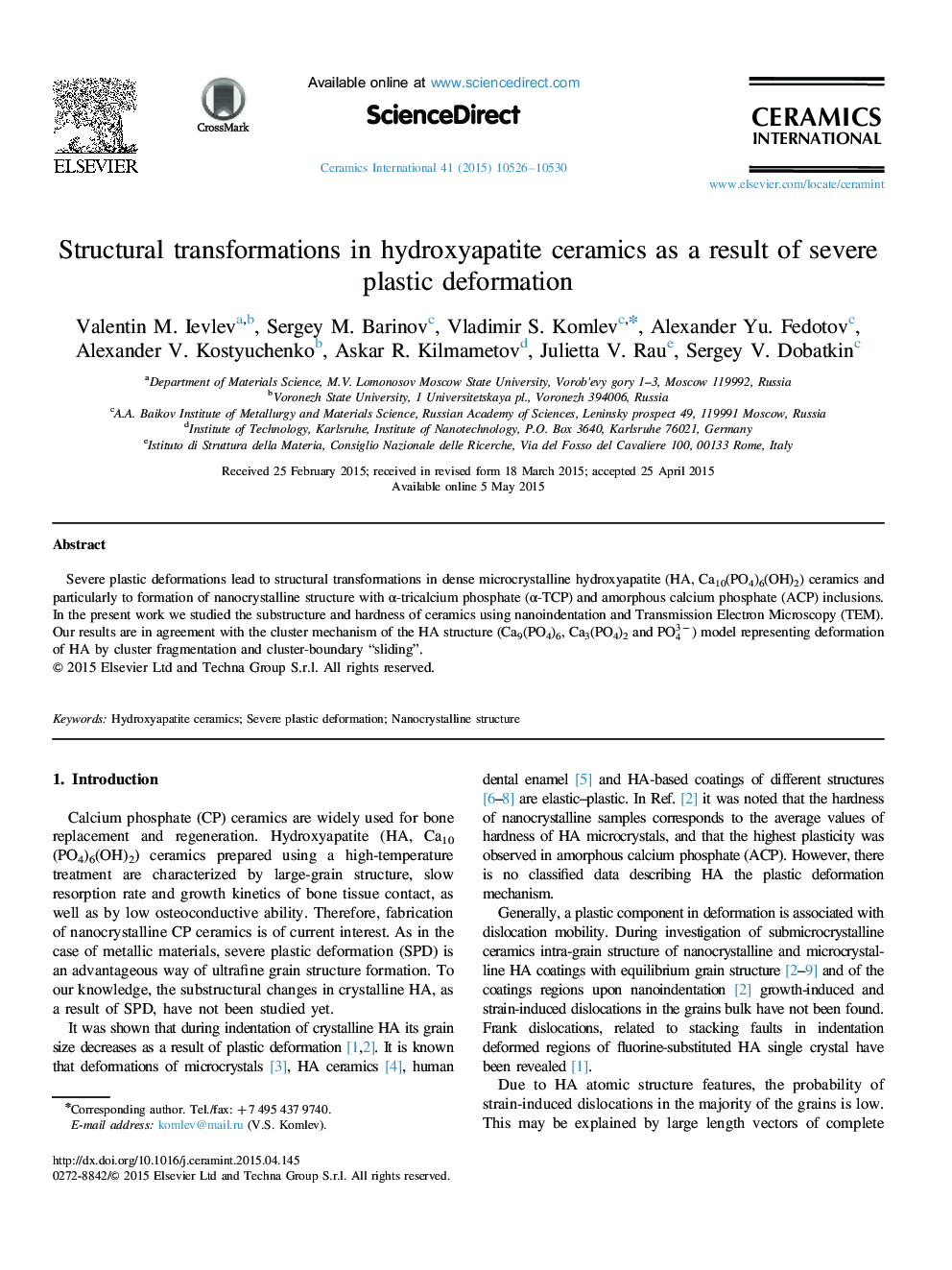| Article ID | Journal | Published Year | Pages | File Type |
|---|---|---|---|---|
| 1460010 | Ceramics International | 2015 | 5 Pages |
Abstract
Severe plastic deformations lead to structural transformations in dense microcrystalline hydroxyapatite (HA, Ca10(PO4)6(OH)2) ceramics and particularly to formation of nanocrystalline structure with α-tricalcium phosphate (α-TCP) and amorphous calcium phosphate (ACP) inclusions. In the present work we studied the substructure and hardness of ceramics using nanoindentation and Transmission Electron Microscopy (TEM). Our results are in agreement with the cluster mechanism of the HA structure (Ca9(PO4)6, Ca3(PO4)2 and PO43−) model representing deformation of HA by cluster fragmentation and cluster-boundary “sliding”.
Related Topics
Physical Sciences and Engineering
Materials Science
Ceramics and Composites
Authors
Valentin M. Ievlev, Sergey M. Barinov, Vladimir S. Komlev, Alexander Yu. Fedotov, Alexander V. Kostyuchenko, Askar R. Kilmametov, Julietta V. Rau, Sergey V. Dobatkin,
